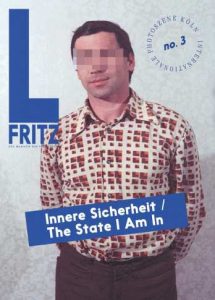©2016 Internationale Photoszene Köln gemeinnützige Unternehmergesellschaft (haftungsbeschränkt) i.G., photographers and authors [and translators] 
The Pier, by Jule Schaffer
A man in a hoodie cycles along the night-time streets of Malmö, a large bag of construction material on the handlebars, illuminated by the streetlamps’ rainy light. The call of adventure is heard through a Swedish song playing in the background. Nils Petter Löfstedt films Erik Vestman on the way to a secret and wondrous mission: The Pier.
Some months previously, in December 2008, the two street artists were on an exploratory tour on Malmö beach when they came across a humble-looking opening: concealed beneath the far ends of a landing stage was a man-high cavity, full of stones, rubble, seaweed and rough concrete walls. Where others see an inhospitable place, Löfstedt and Vestman glimpse poetic potential. For the next six months they work on transforming the dark cave and making the impossible possible: On the edge of Malmö, amid boulders and concrete, a room is created beneath a pier with white walls, parquet floor, a miniature door and windows.
Löfstedt follows the construction process with his camera; a film, photos and a book are created, which will be on show as part of the Photoszene festival. In a stylistic mix of The Blair Witch Project, fairytale, coming-of-age film and mining documentary, one sees shadowy black-and-white images of a night-time hike, gravel and refuse, a man with a miner’s headlamp and the various stages of the conversion. These include the search for construction material, the magic moment when the first white paint touches the concrete wall and covers everything with the enchantment of potential; a mouse that patters over the pair’s bread; but also the panic when voices approach the secret room – will the project be discovered prematurely? The flow of black-and-white images is interspersed with pastel-coloured shots of the landscape, waves breaking on the shore, and portraits of the two night-time workers in which moments of exhausted, ecstatic joy can be seen.
It is the joy, as Vestman explains – and one believes him straight away –, of giving space to one’s own ideas in the truest sense of the word, of pursuing a self-determined project. Even if, and precisely though, this project may seem curious to pointless at first. It is not the only work that the street artists have realized in the public space. For Club 13, for instance, photographer and film-maker Löfstedt posted images of friends and acquaintances on paving stones in the public space; other works encompass poster walls in the forest, interactive, football-playing wooden dolls on concrete walls and mystical-looking image projections on stagnant waters.
But with their construction beneath the pier, the artists conquer and open up spaces that are new even for street art. The rough concrete walls, the narrow entrance, the fear of being discovered by passers-by, not least the tally that the artists use to document their time “below ground” – all this is reminiscent of a bunker, a place of concealment that offers safety in an otherwise art-alien or even art-hostile environment. The action culminates in the opening ceremony of the “pier”, with which the concept of the museum white space is carried ad absurdum and simultaneously filled with life: One sees visitors (young and old) wriggling on their bellies through the little tunnel and, once inside, drinking beer and dancing to music on the parquet floor, lighting candles, rolling themselves up in sleeping-bags for the night, filling visitors’ books with their thoughts. The room created by Löfstedt and Vestman becomes a meeting-place where art is actively lived. The Pier is a call to see and to realize the potential for poetry in everyday life, to expand the art scene and create new spaces which – at least temporarily – provide us with the inner assurance that everything is possible.
